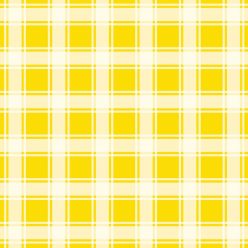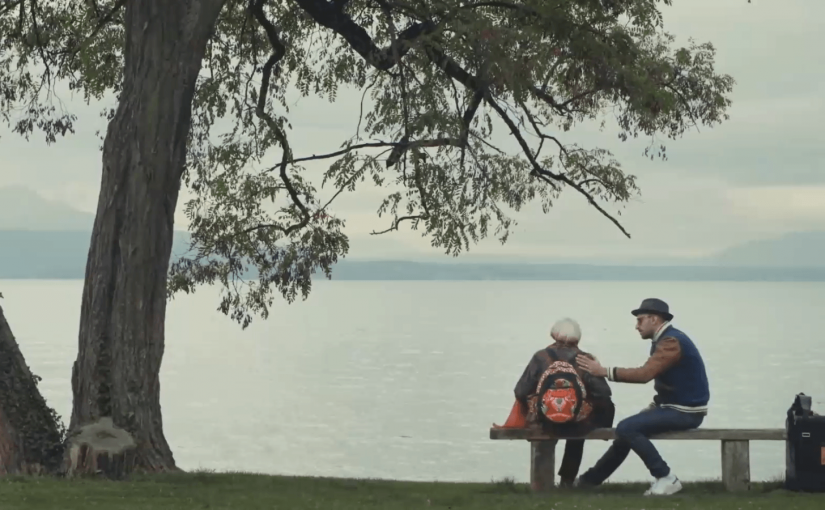I am not one who usually watches documentaries, as I am more able to appreciate fiction. However, this was one documentary that I could sit through and enjoy, empathise and relate to the people and story shown.
Perhaps it was the music, the stories of the people captured in the photographs, the friendships and relationship formed throughout the film. I have always felt an affinity to works that were personal, as I find it fascinating how they reflect the artists themselves. In this case, I was offered a peek into Agnes Varda and JR’s relationship, and a little bit more about their personal selves, and not just as artists.
JR is fulfilling my greatest desire. To meet new faces and photograph them, so they don’t fall down the holes in my memory.
I might say that I was a little emotionally biased from the start of watching this movie, having known that Varda had passed on just not more than a month ago. I was already emotionally invested in Varda as a character, who in her age was still exuberant, still passionate about her art.
There is a certain feeling invoked in me, that made me think about aging and death, and how I want to go about living my life. I am still young, but time flies by really quickly. What would I be doing at 90, if I ever lived up to that age? What would I have done, experienced, accomplished?
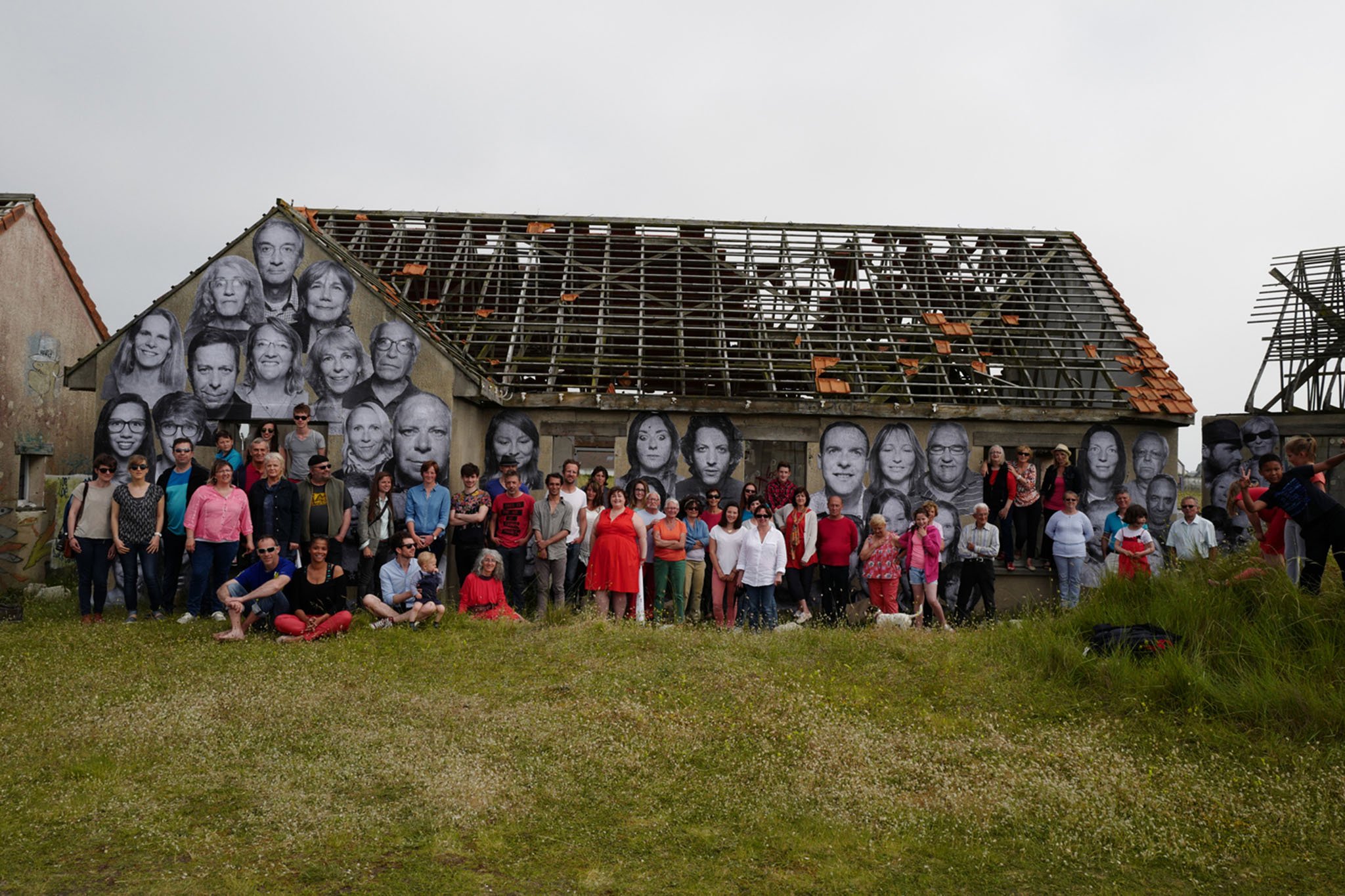
Each face has a story
Everyone lives their lives differently, and have experiences that are exclusive to themselves. But sometimes these experiences are shared, and that is something that I saw in the film that moved me. I saw personal stories, but I also saw how these stories were connected, how there was also the story of the communities, and how sometimes the people are brought together through JR’s Inside Out Project.
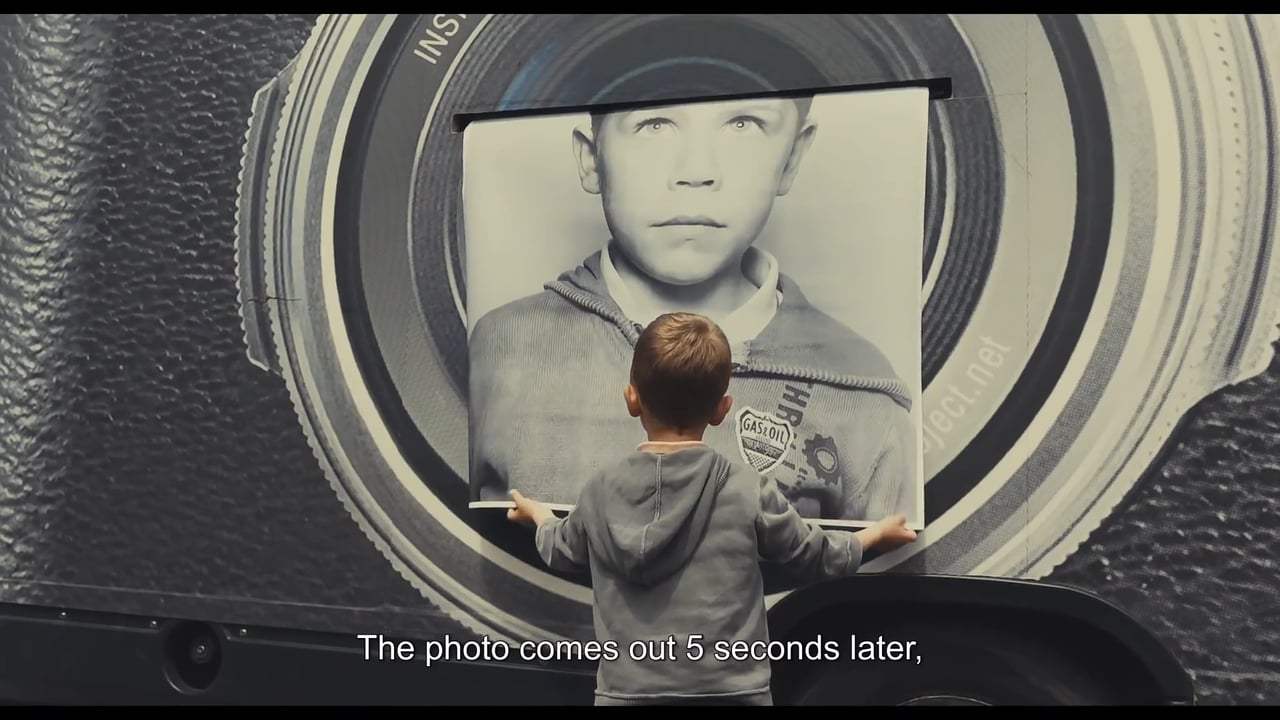

You see, these people aren’t celebrities, but they were brought into attention through these works, and are no longer invisible. They were given a sort of recognition through these, and strangers are brought together in heartwarming ways. There is a correlation between JR’s fascination towards street art, as the world is taken as one big art gallery, and Varda’s looking at different faces, who populate the areas, who write the stories of the place.
I am myself drawn towards people and portraits, and how everyone has their own stories, are the lead actors of their own film, and hence I could relate to their intentions in these works, how they wanted to train the camera onto the marginalised people or forgotten citizens of France, and bring their stories into significance.

A farmer onto his own barn.
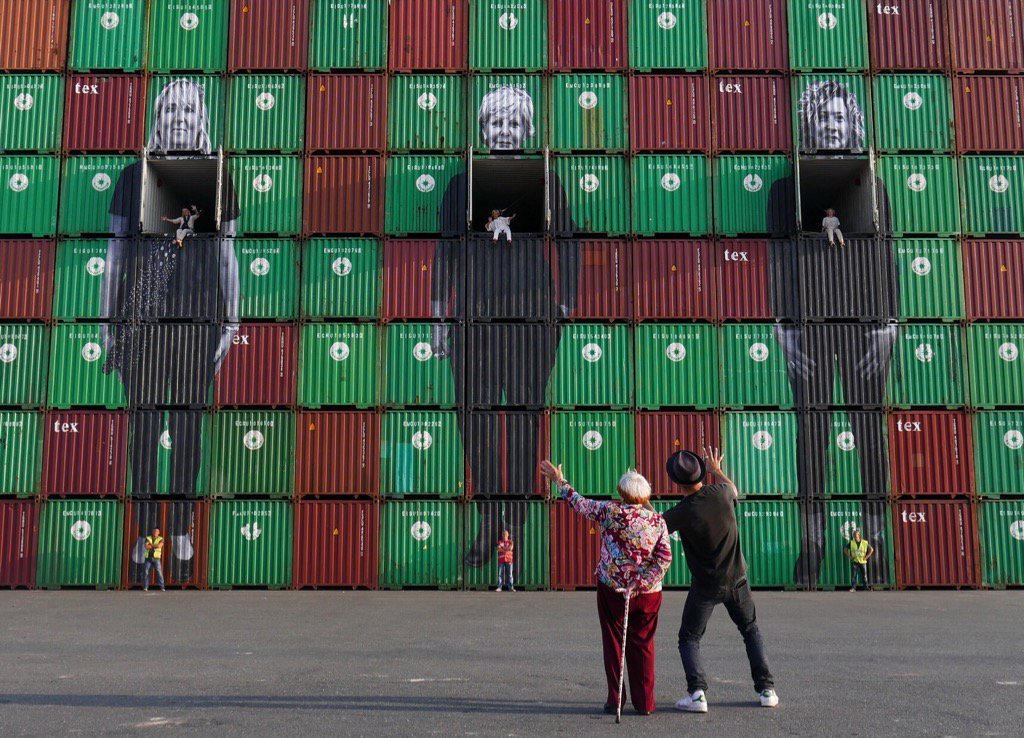
The wives of dock workers on a background of arranged containers several stories high.

Miners on a building where they once lived.
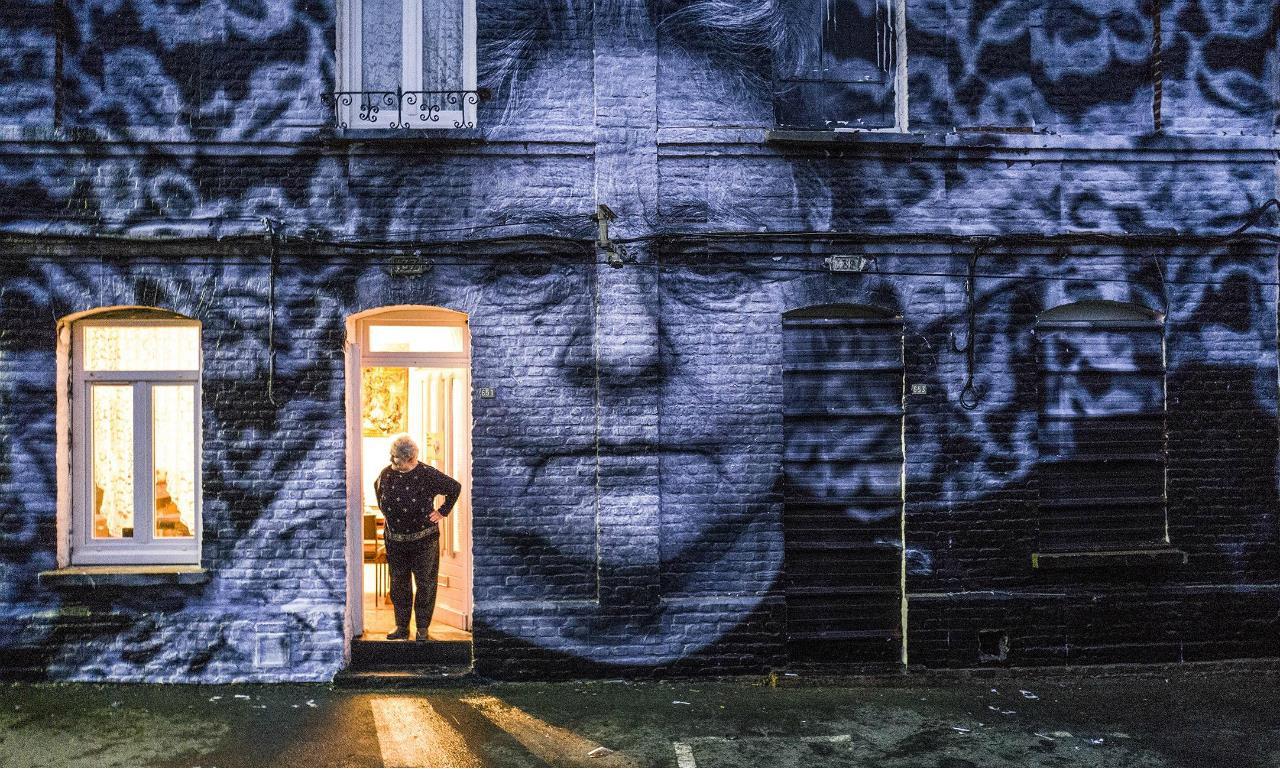
In the same neighbourhood, Jeanine is the last person to survive the residential area. She is the last link to preserve the houses as a link to the mining community back then. There is a strength in her eyes, and it was very moving to see her expression during the reveal. The mural tells people, she is here.

In another part of the film, they encounter a structure sticking out in the middle of a beach, which supposedly fell off the cliff. They discussed on what image they wanted to put up. They made hurried measurements to escape the tide. Eventually they settled on this picture of a model Varda often worked with. He sits nonchalantly in the cradle of the structure.
In just within a day, the image disappeared along with the tide. There is a bittersweetness to the ephemerality of the mural, and there is a reminder that sometimes, things just aren’t permanent, just as life itself is.
A big takeaway from the documentary, other than a reflection on life, is the technical aspects of putting up murals, street art, and photography. Throughout the film as they were shooting people and putting up the photographs on the walls, we are invited to see how they discussed on choosing the right wall. Many factors were considered, like the material of the wall, the scale they wanted to use, what kind of picture is it? How does the photo correlate to the wall or façade it is installed on?
For example, below you can see how the texture of the window blinds were used for the paper held by the postman, by carving out a negative space.
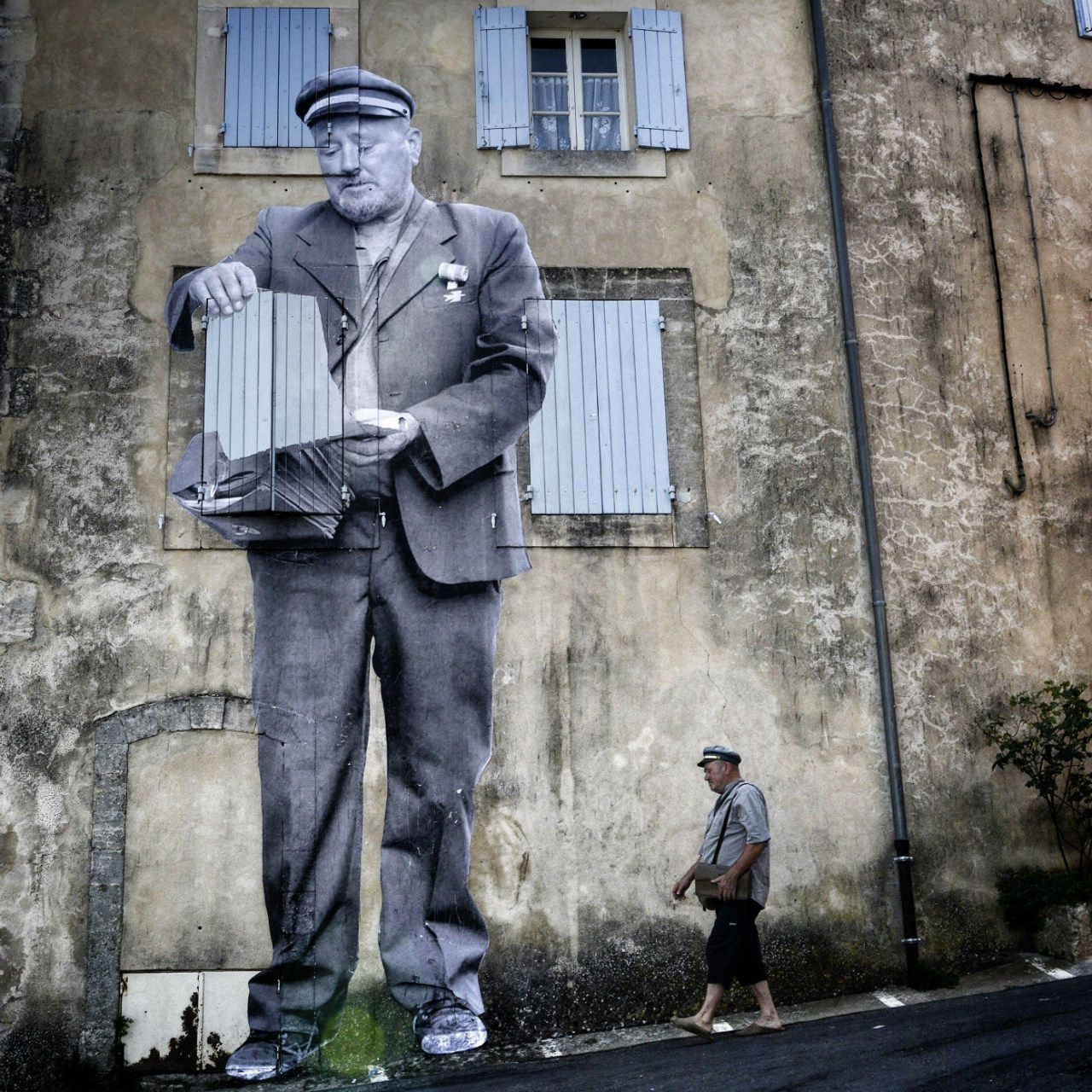
Chance is one of my best assistants
There is beauty in irregularity, in chaos. This is something I agree with, although sometimes I do feel like a control freak, but this is exactly why. Sometimes, we just have to let things go their own way, and follow the ride. You never know the journey you’d be taken on.

JR is known for wearing his hat and sunglasses, and his real identity isn’t revealed. They joke that Varda cannot see for her vision is failing, and JR cannot see because it is dark with his sunglasses. Varda convinces JR throughout the film to take off his sunglasses so she could look at his eyes.
The film ends with the possibility that he did, after consoling her encounter with an old friend.
I held back my tears as I felt so much for Varda, something incomprehensible.
